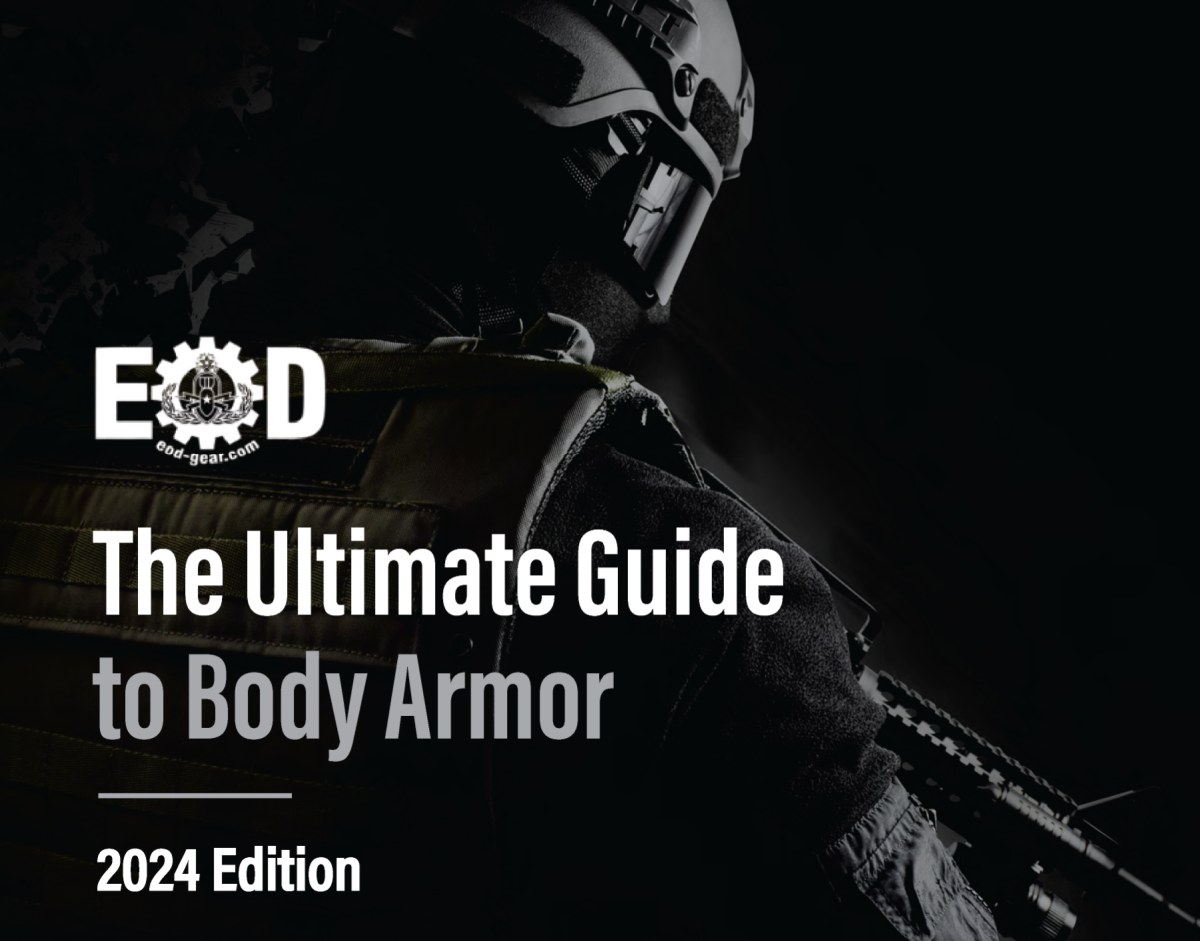Make your life easier with the Ultimate Guide To Body Armor!
To get the Guide, just fill out your name and email address.

What is the strongest level of body armor?
Level IV rifle plates is the strongest level of body armor currently available according to NIJ. Level IV stops AP rounds as well as all smaller rifle and pistol rounds. Be sure to download the Ultimate Guide to Body Armor to get all of your questions answered and to become the body armor expert within your group of co-workers and friends.
Is Level 3 body armor worth it?
Whether or not Level 3 body armor is worth it depends on your specific needs, circumstances, and personal considerations. Here are some factors to consider when determining the worth of Level 3 body armor:
- Level of Threat: Evaluate the level of threat you anticipate facing. If you work in a profession or live in an area where there is a higher risk of encountering firearms, such as law enforcement, security personnel, or certain military roles, Level 3 body armor can provide valuable protection against a range of common ammunition types.
- Legal Considerations: Understand the legal implications and regulations surrounding the use and possession of body armor in your jurisdiction. In some places, there may be restrictions or requirements for owning body armor.
- Cost: Level 3 body armor tends to be more expensive than lower-level protection options. Consider your budget and the value you place on personal safety when determining if the cost is justifiable for your needs.
- Comfort and Mobility: Body armor can be bulky and restrict mobility to varying degrees. Assess how comfortable you are wearing body armor for extended periods and how it may impact your ability to perform necessary tasks or movements.
- Risk Assessment: Evaluate the specific risks you face and how likely you are to encounter situations where body armor would be necessary. This can include factors such as the nature of your work, the locations you frequent, and the potential threats you may encounter.
- Additional Protection: If you require protection against armor-piercing ammunition or higher velocity rifle rounds, Level 3 armor may not be sufficient. In such cases, considering Level 4 armor or specialized armor designed for higher-level threats might be more appropriate.
Ultimately, the decision to invest in Level 3 body armor should be based on a comprehensive assessment of your individual needs, risk profile, and personal preferences. It can provide valuable protection in certain scenarios, but it is essential to research and understand its limitations, consult with experts, and adhere to relevant legal requirements.
What will Level 3 body armor stop?
Level 3 body armor is designed to provide a high level of protection against various types of ammunition commonly used in handguns and some types of rifles. The specific protection level and standards can vary depending on the country and the organization that establishes those standards. However, in general, Level 3 body armor is capable of stopping or significantly reducing the impact of the following types of ammunition:
Handgun Rounds: Level 3 armor can typically stop common handgun rounds such as 9mm, .40 S&W, .45 ACP, and .357 Magnum. It is designed to provide protection against these rounds at close range.
Shotgun Rounds: Level 3 armor can offer some resistance against certain shotgun rounds, including buckshot and slugs. However, it may not provide full protection against all types of shotgun ammunition.
Rifle Rounds: Level 3 armor is generally capable of stopping or minimizing the impact of lower velocity rifle rounds, such as 7.62x39mm (AK-47 rounds) and .308 Winchester (7.62x51mm NATO). It may also provide partial protection against higher velocity rounds like 5.56x45mm NATO (commonly used in AR-15 rifles) but may not stop armor-piercing variants like M855 "green tip" rounds.
It's important to note that the effectiveness of body armor can depend on various factors, including the distance from which the round is fired, the angle of impact, and the specific construction and materials used in the armor. Different manufacturers may have different designs and capabilities, so it's always recommended to consult with the manufacturer or experts in the field to understand the specific protection level and limitations of a particular Level 3 body armor.
Will Level 3 armor stop green tip?
Level 3 armor typically refers to body armor that provides a high level of protection against various types of ammunition, including those commonly used in rifles. However, the specific details and standards of body armor can vary depending on the country and the organization that establishes those standards.
If you are referring to "green tip" ammunition, which commonly refers to M855 5.56x45mm NATO rounds, it is worth noting that these rounds have a steel penetrator at the tip and are designed to better penetrate barriers and body armor compared to standard lead-core ammunition. While Level 3 armor can provide a good level of protection against many types of rifle rounds, it may not be specifically designed to stop armor-piercing rounds like green tip ammunition.
To determine if Level 3 armor can stop green tip rounds, it's essential to consider the specific specifications and testing standards of the armor in question. Some Level 3 armor can indeed provide some resistance against M855 rounds, but it may not guarantee complete protection. Additionally, factors such as the distance of the shot, the angle of impact, and the condition of the armor can also affect its effectiveness.
If you require the highest level of protection against armor-piercing ammunition, it would be advisable to consider armor that meets Level 4 standards or armor specifically designed to withstand armor-piercing rounds. It is always recommended to consult with armor manufacturers or experts in the field to ensure you have the most accurate and up-to-date information regarding the specific capabilities of body armor.
